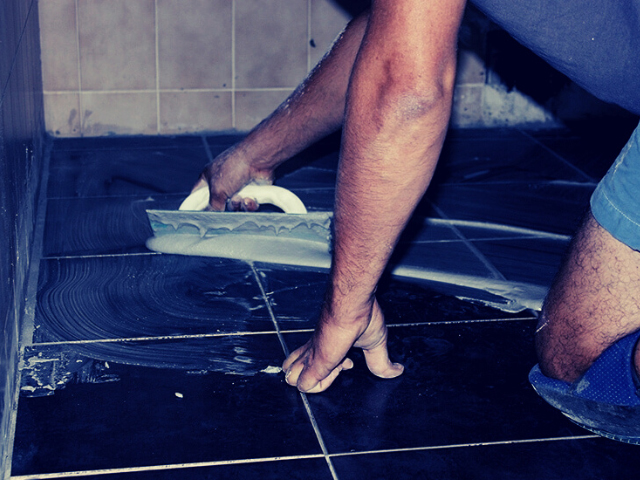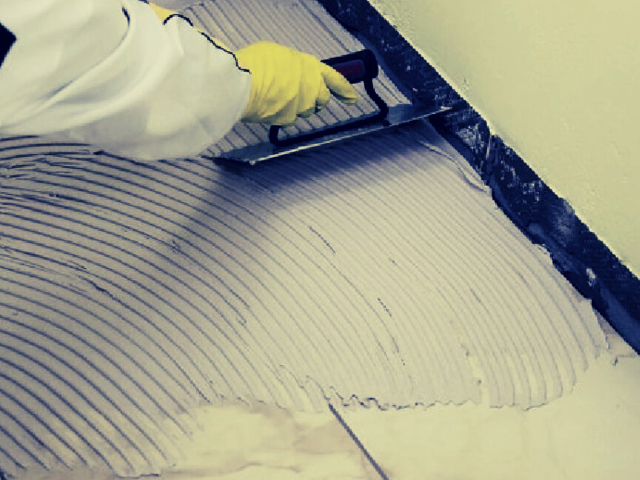If you’re in the market for an adhesive to stick down your ceramic tile, it’s essential to know that not all adhesives are created equal. So what adhesive sticks to ceramic tile?
The secret lies in choosing an adhesive with enough strength and a solid bond to hold down heavy ceramic tiles.
Luckily, there are some great options on the market right now that will work great with your ceramic tile installation project!
Read More: Best Adhesive For Floor Tiles
Read More: Best Adhesive For Ceramic Tile On Concrete
Recommend Adhesive For Ceramic Tile: ROBERTS 5900-1 Ceramic Tile Adhesive
What Adhesive Sticks to Ceramic Tile?
Silicone Adhesive
Compared to other adhesives, silicone is ideal for ceramic tile installation. While it’s more expensive than most glues, silicone creates a flexible bond that protects against chipping and cracking—and it can be completely removed without damaging your tiles.
The best part of silicone adhesive is that you don’t need much space to apply it. This makes it possible for DIYers to install themselves without much experience in laying tile.
And all you need is a little water and some room-temperature time; no chemical curing process is required.

Construction Adhesive
It’s hard to get more heavy-duty than construction adhesive. These products are designed for use in wet environments and have a thick, syrupy consistency that will work on any porous surface (like ceramic tile).
In many cases, they’re fortified with extra resins that ensure a strong bond even when moisture is involved. Of course, these products can be messy and don’t provide as much flexibility as other adhesives, but they make up for durability for what they lack in finesse.
If you’re looking for something tough enough to handle most tasks around your home or job site, construction adhesive is a great option.
Read More: Best Food-Safe Glue for Ceramics
Read More: How to Glue Ceramic Back Together?
Epoxy
One of the most popular adhesives for ceramic tile, epoxy also offers one of the widest ranges of brands and colors. The quick-curing epoxies can adhere to grout lines as well as tiles.
However, choose a water-based epoxy for maximum flexibility if you’re using it on a shower floor or in another area where moisture could cause problems.
Some other applications where water may be involved are renovating bathrooms with laminate or cement tiles, cleaning tiles in your kitchen and bathrooms and removing tile from around sinks and tubs.
Adding some waterproofing agent to your glue mix when working with bathroom tiles ensures that your adhesion will not fail when coming into contact with moisture.
Super Glue
To make a solid connection, you’ll need a fast-acting and strong glue. Super Glue or Krazy Glue will adhere most things together (almost) instantly. It’s best to use a tiny amount of super glue and let it sit for 30 seconds to dry before placing two items together.
If they still don’t want to stay together, try heating them with a hair dryer or heat gun first. This tip only works with certain glues; test out your specific brand before using it in an important project.
UV Cured Glues
One of the best options for ceramic tile adhesives is UV-cured glue, which dries through a photochemical reaction when you shine a UV light on it. When we say dries, what we mean is it becomes tacky—not sticky like other adhesive options.
As a result, if you’re gluing tile onto a wall or floor and then peeling off its paper backing, you can press them together and hold them until they stick without waiting hours for the adhesive to dry. These are probably your best bet if that’s all you need.

How do you stick something to the tile?
There are many ways of sticking things on a tile. It all depends on your level of expertise and how permanent you want it to be. Many crafty folks swear by using hot glue guns; however, hot glue does not work well on porous surfaces like tile or pottery.
For something more heavy-duty, consider spray adhesive; it’s quick and easy, making it a good choice for those who don’t want their projects to be too permanent.
If you want something that won’t leave behind a sticky residue but will last a long time, try a spray-on adhesive for walls and glass; these products typically use a siliconized coating.
Is Gorilla Glue good for ceramic tiles?
Yes, Gorilla Glue is a cyanoacrylate adhesive that has been designed specifically for ceramic tile. It comes in a bottle of yellow goo, which dries clear and sets in about 1-2 hours.
If you need more time, wait at least 8 hours before you start grouting. This glue is great for DIY projects such as hanging objects on ceramic tile or patching small cracks or holes.
Does wood glue stick tile?
It’s generally not good to mix dissimilar materials unless you have a very good reason for doing so—like, say, an artistic or functional reason.
Wood glue does contain solvents that can damage tile over time, and you don’t want an ugly crack in your new backsplash if things go bad!
Does construction adhesive stick to tile?
Last Opinion
As long as you use an adhesive designed for ceramic tile, adhering to tile should be a relatively simple process. However, for best results, it’s essential to follow instructions carefully and have a little patience; getting grout between tiles right will take time and effort.
If your project requires precision and accuracy, you might consider enlisting help from a professional. When you’re ready to apply your adhesive, use plenty of water on both sides of each tile.
The pressure-sensitive tapes most popular with ceramic-tile installers are often more forgiving than other types of adhesives when applied incorrectly; if used correctly (with ample water), though, they can result in solid and sturdy installations that last for years.

